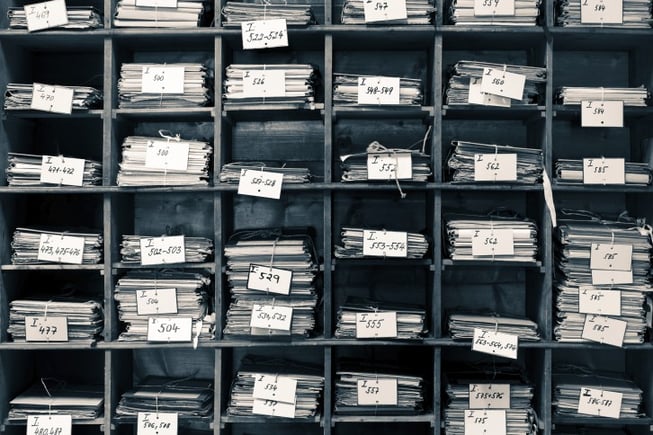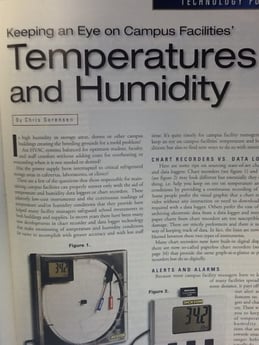
Campus Facility Maintenance Magazine, Fall 2007
The Dickson Archives is a running series of blogs which examines Dickson’s successful past in an attempt to see how much we've changed, how data monitoring has changed, and if anything has stayed the same. To see other articles in this series, go to our From the Dickson Archives Blog Category.
The Who (not the band):
Dickson appeared in a 2007 issue of Campus Facility Maintenance Magazine, “The Exclusive Information Source for Campus Operations Excellence.”
From a little research, I was able to find out/assume that Campus Facility Maintenance Magazine was formerly published within the entity SchoolFacilities.com and Cygnus Business Media. Back in 2007, Campus Facility Maintenance Magazine was in full stride, and Dickson appeared on pages 33 and 34.
The article was written by current Dickson VP of Marketing, Chris S., and hats off to Chris, the article holds up extremely well (remember, the first iPhone was released in 2007).

The What:
The article is titled, “Keeping an Eye on Campus Facilities’ Temperatures and Humidity.” In the article, Chris shows the importance of monitoring temperature and humidity within a college campus. As someone who just got done battling poor ventilation in lecture halls for four years, I couldn't agree more.
Chris breaks up his article to display some key factors facility managers should take into consideration when monitoring the various areas of a campus. He discusses chart recorders versus data loggers, alerts and alarms, data handling, and calibration. As he works through the various decisions a campus facility manager must make when deciding what to monitor with, he provides a larger narrative of the challenges of monitoring a college campus. Namely, that facility managers must research to find the best fit for their needs, always being wary of recording too little data, or too much. Chris asks you to find the happy middle.
What has stayed the same:
From dining halls to biology labs to large lecture halls, Chris’s final point, “There is no one instrument (data logger or chart recorder) that will be an appropriate temperature and humidity monitoring tool throughout the campus,” still rings true.
Dickson has diversified its product line specifically with these challenges in mind. We offer the widest selection of data loggers and chart recorders, which allows us to offer the best solutions for campus facility managers. Don’t believe me? Check out our product line, or call one of our representatives at 1-800-757-3747. We can find not only something that will fit your application, but the thing that will fit your application.
What has changed:
Chris makes numerous interesting observations, but one in particular struck my eye. He states, “It’s often especially useful in larger campuses to look for data loggers that are capable of storing data on the same type FLASH memory cards that we now are familiar with in digital cameras.” This statement is slightly outdated with the rise of wireless technology, but the ideology of making the retrieval of data consistent is still important, if not more important today.
What has changed since 2007, is DicksonOne, Dickson’s wireless data logging system. DicksonOne makes data retrieval consistent and seamless. For example, when monitoring one dorm’s HVAC system, having all of the data under one roof (that’s not even close to being a good pun) allows for facility managers to see the inconsistencies from one room to the next, and analyze possible problems without ever having to manually retrieve data. Furthermore, entire departments, even entire campuses, can be under the same data monitoring roof.
Conceptualizing on a smaller scale
Let's say a University’s Rare Book Room's temperature starts to rise because of an HVAC malfunction. For the invaluable documents (sometimes over a thousand years old). . .not good.
In the past, temperatures would be checked once a day or once a week, and when you came in to work after the HVAC malfunction, a painting was a little more withered, or a famous journal was now unreadable.
DicksonOne helps prevent these problems. By setting alarms for each data logger or each location, that invaluable painting in the University Archives, or hydrogen-palladium solution in the Chemistry Building will never be compromised. The communication between data loggers is no longer about FLASH memory, but about the wireless integration and automated communication of devices to you, saving you time, and saving you money.
Dickson has come a long way in six years. I’m writing this on a blog, but in 2007, I’m not sure if I knew what a blog was. You can visit the DicksonOne website for more information on the recent development.
